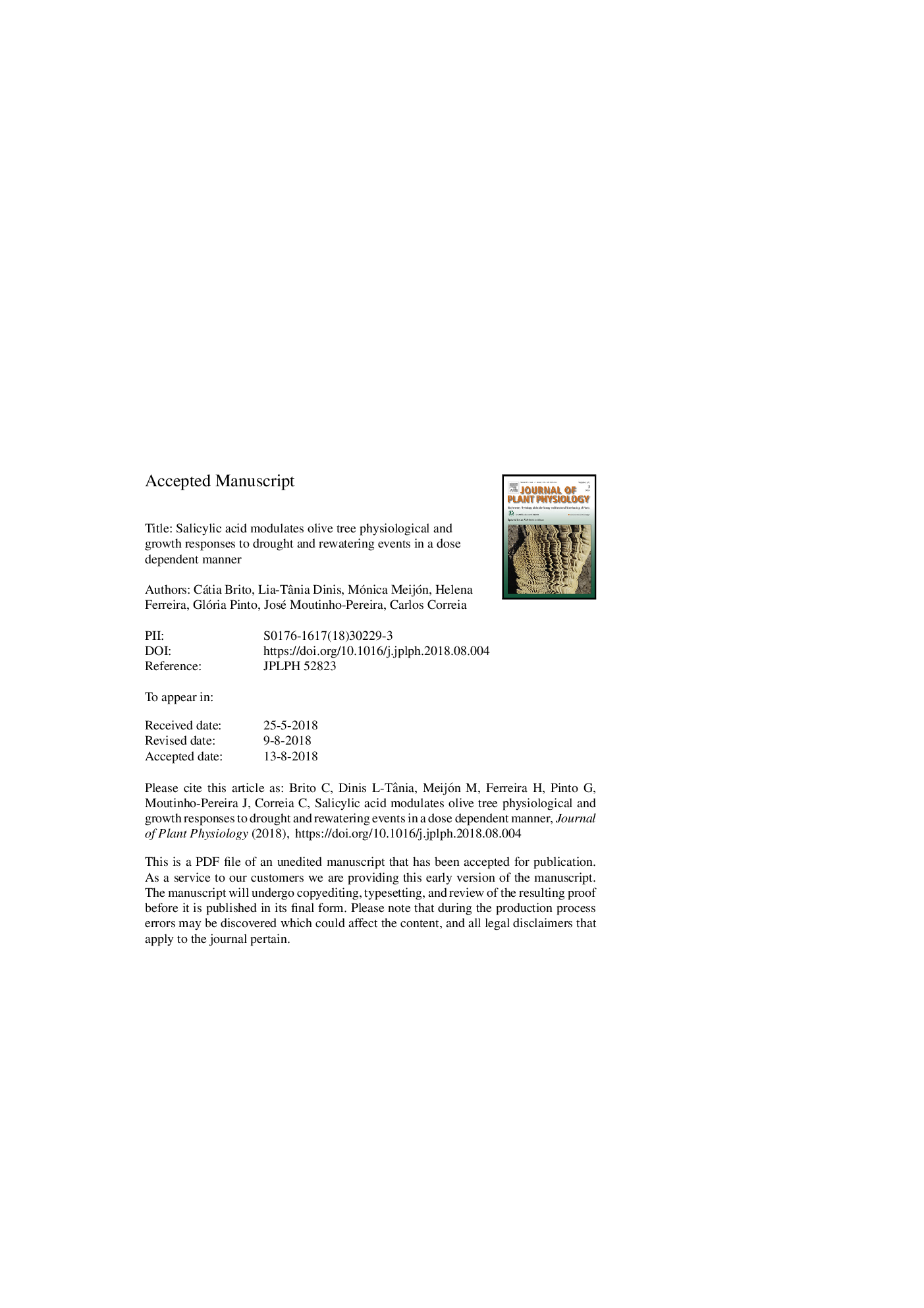| Article ID | Journal | Published Year | Pages | File Type |
|---|---|---|---|---|
| 8943786 | Journal of Plant Physiology | 2018 | 43 Pages |
Abstract
The predicted accentuation of drought events highlights the importance of optimize plants capacity to tolerate drought, but also the capacity to recovery from it, especially in species, as olive tree (Olea europaea L.), that grows in particularly susceptible regions. Three different concentrations (10, 100 and 1000âμM) of salicylic acid (SA), a stress signaling phytohormone, was sprayed on 3-year-old potted olive trees subjected to three successive drought and rewatering events. Trees responses to SA application are concentration dependent, being 100âμM the most effective concentration to improve drought tolerance and recovery capacity. During drought events, this effectiveness was achieved by osmolytes accumulation, leaf water status maintenance, reduced photosynthetic systems drought-associated damages, and by optimizing shoot/root ratio. The better plant fitness during drought allowed a fast recovery of the physiological functions upon rewatering and reduced the necessity to invest in extra repair damages, allowing the regrowth. The intense abscisic acid (ABA) signal close to upper epidermis in stressed controls suggests a “memory” of the worst water status displayed by those plants. SA attenuated the limitation of total biomass accumulation imposed by drought, mainly in root system, increased water use efficiency and lead to a higher intense signal of indoleacetic acid (IAA) in leaves during recovery period. In summary, in a suitable concentration, SA demonstrate to be a promising tool to increase drought adaptability of olive trees.
Related Topics
Life Sciences
Agricultural and Biological Sciences
Agronomy and Crop Science
Authors
Cátia Brito, Lia-Tânia Dinis, Mónica Meijón, Helena Ferreira, Glória Pinto, José Moutinho-Pereira, Carlos Correia,
